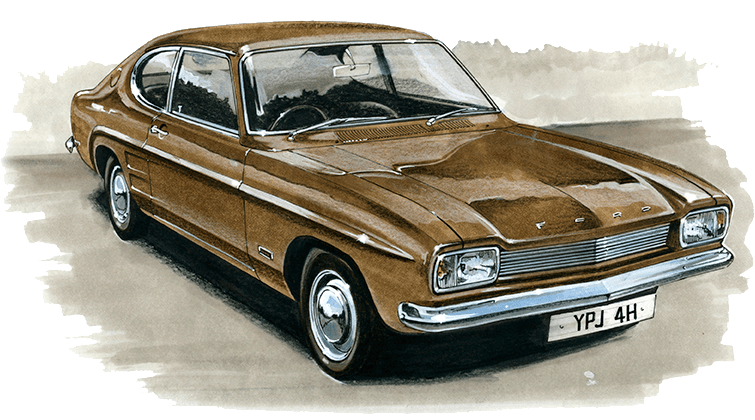
The Ford Capri is a legendary car that left an indelible mark on the automotive industry, particularly during the 1960s and 1970s. Making its debut in 1969, the Capri quickly earned the moniker of the “European Mustang” due to its sleek design and sporty appeal. However, while the Capri gained immense popularity worldwide, it underwent several modifications and variations depending on the international markets in which it was sold. Let’s delve into the fascinating journey of the Ford Capri and explore its differences across various countries.
1. United Kingdom:
The UK was the birthplace of the Ford Capri, where it captured the hearts of British motorists. In its early years, the British Capri boasted a range of engine options, from modest 1.3-liter units to high-performance 3.0-liter V6 engines. Over time, different trim levels and limited-edition models were introduced, such as the Capri 2000GT XLR and Capri RS3100. The British versions also had distinct features like right-hand drive and optional vinyl roofs.
2. Germany:
Germany, another major market for the Capri, witnessed variations that catered to local preferences. As the home country of Ford of Europe, German Capris often received innovative features and distinct trim options. For instance, the famous Capri RS2600 was exclusively available in Germany, equipped with a powerful 2.6-liter V6 engine. German Capris also showcased distinctive design elements, including prominent rectangular front headlights, fog lights, and unique badges.
3. United States:
The American market had its own unique Capri experience. Modifications were necessitated by stricter safety and emissions regulations, which resulted in different engines, bumpers, and lighting setups. Known as the “Capri II,” it was equipped with either a 2.0 or 2.3-liter four-cylinder engine. American Capris also featured larger bumpers with integrated rubber overriders, side markers, and quad headlamps to meet the U.S. safety standards.
4. Australia:
Australia, a country with a rich muscle car culture, adopted the Ford Capri in its own distinctive way. Known as the “Australian Capri,” it was built locally with significant design differences compared to its European counterparts. The Australian Capri showcased a more aggressive appearance, featuring a distinct front grille, flared wheel arches, larger bumpers, and taillights sourced from the Ford Cortina. Engine options included a range of inline-six and V6 engines, providing ample power for the Australian consumers.
5. South Africa:
In South Africa, the Ford Capri was called the “Capri Perana”—a collaboration between Ford and the renowned South African tuner, Basil Green Motors. The Capri Perana stood out with its performance upgrades, including larger engines and advanced suspension systems. It featured a tuned 5.0-liter V8 engine, producing impressive power that set it apart from its international siblings.
It is evident that the Ford Capri underwent various changes and adaptations to cater to the diverse tastes and regulations of different international markets. From Germany to the UK, the USA to Australia, each country embraced the Capri and added its unique touch, turning this iconic car into a global phenomenon. The Ford Capri’s ability to evolve and successfully adapt to different markets is a testament to its enduring legacy and popularity even today.